In recent years, realistic tattoos have taken the tattoo industry by storm, captivating enthusiasts and artists alike with their incredible detail and lifelike qualities.
The rise of realistic tattoos has been fueled by advancements in tattoo technology, the growing skill of tattoo artists, and the desire of individuals to adorn their bodies with unique, eye-catching designs.
Realistic tattoos are a style of tattooing that aims to create highly detailed, true-to-life representations of subjects such as portraits, animals, objects, and scenes.
These tattoos are characterized by their intricate shading, precise lines, and the use of subtle color gradients to achieve a sense of depth and dimensionality.
Unlike traditional or stylized tattoo designs, realistic tattoos strive to capture the essence of the subject matter as accurately as possible, often resembling high-resolution photographs or hyperrealistic artwork.

One of the unique characteristics of realistic tattoos is the level of skill and expertise required to execute them flawlessly.
Artists specializing in this style must have a keen eye for detail, a mastery of shading techniques, and the ability to translate complex images onto the contours of the human body.
The process of creating a realistic tattoo often involves extensive preparation, including the use of reference photos, sketches, and stencils to ensure the final result is as true-to-life as possible.
As the demand for realistic tattoos continues to grow, more and more artists are honing their skills and pushing the boundaries of what is possible with this captivating style.
From ultra-detailed portraits of loved ones to breathtaking wildlife scenes, realistic tattoos offer individuals the opportunity to carry a piece of art with them wherever they go, forever etched into their skin.
The Allure of Realistic Tattoos
Realistic tattoos have become increasingly popular due to their ability to capture lifelike details, create personalized designs, and showcase the incredible artistry of tattoo professionals.
The allure of realistic tattoos lies in their power to bring imagination to life on the canvas of the human body. Let's explore the key aspects that make realistic tattoos so captivating.
Capturing Lifelike Details in Realistic Tattoo Designs

One of the most striking features of realistic tattoos is their ability to capture lifelike details with astounding accuracy. Skilled tattoo artists use advanced techniques to create intricate designs that mimic the appearance of photographs or hyperrealistic artwork.
By employing precise shading, fine lines, and a keen eye for detail, realistic tattoo artists can recreate the subtle nuances of a subject's features, such as the gleam in an eye, the texture of fur, or the reflection of light on a surface. This attention to detail is what sets realistic tattoos apart from other styles.
The use of shading techniques, such as smooth gradients and precise highlighting, allows realistic tattoo artists to achieve a sense of depth and dimensionality in their designs. This creates an illusion of the tattoo being three-dimensional, as if it is jumping off the skin.
Realistic tattoo artists often work with a wide range of colors to capture the natural hues and tones of their subjects. By layering and blending colors seamlessly, they can create stunningly lifelike representations that appear to be a part of the wearer's body.
The ability to capture lifelike details in realistic tattoos is a testament to the skill and dedication of the artists who specialize in this style. It requires years of practice, a deep understanding of anatomy and light, and an unwavering commitment to perfection.
The end result of capturing lifelike details in realistic tattoos is a breathtaking piece of art that looks as though it could come to life at any moment. It is this incredible realism that draws people to this style of tattooing and leaves a lasting impression on all who see it.
Creating One-of-a-Kind, Personalized Realistic Tattoos

Another allure of realistic tattoos is the opportunity to create one-of-a-kind, personalized designs that hold deep meaning for the wearer. Unlike pre-made or flash tattoos, realistic tattoos are often custom-designed to suit the individual's preferences and story.
Realistic tattoo artists work closely with their clients to understand their vision and bring it to life. This collaborative process involves discussing the desired subject matter, size, placement, and any specific details that hold significance for the wearer.
By creating a personalized realistic tattoo, individuals can express their unique identity, passions, and experiences through art. Whether it's a portrait of a loved one, a favorite animal, or a scene that holds sentimental value, a realistic tattoo becomes a permanent reminder of what matters most to the wearer.
The level of customization possible with realistic tattoos is unparalleled. Artists can incorporate specific elements, such as meaningful dates, names, or symbols, into the design to make it truly one-of-a-kind. This attention to personal detail ensures that each realistic tattoo is a reflection of the wearer's individual story.
Personalized realistic tattoos also offer the opportunity to cover up or rework existing tattoos that no longer resonate with the individual. Skilled realistic tattoo artists can transform an old, unwanted design into a stunning new piece that better represents the wearer's current identity and values.
The creation of one-of-a-kind, personalized realistic tattoos is a powerful way for individuals to take ownership of their body art and ensure that their tattoos are a true extension of themselves. It is this level of customization and personal significance that makes realistic tattoos so sought-after.
Highlighting the Artistry Behind Realistic Tattoos

Realistic tattoos not only showcase the subject matter they depict but also highlight the incredible artistry and skill of the tattoo artists who create them. These tattoos serve as a testament to the dedication, precision, and creativity of the professionals who have mastered this style.
The process of creating a realistic tattoo is a complex and time-consuming one that requires a deep understanding of art fundamentals, such as composition, perspective, and color theory. Realistic tattoo artists must have a strong foundation in these principles to create designs that are both visually striking and technically sound.
In addition to their artistic skills, realistic tattoo artists must also have a thorough knowledge of the tattooing process itself. They must be experts in selecting the right needles, inks, and equipment to achieve the desired effect and ensure the longevity of the tattoo.
The level of detail and precision required for realistic tattoos is a true showcase of the artist's steady hand and keen eye. Every line, shade, and color must be applied with utmost care and accuracy to create a cohesive and lifelike design.
Realistic tattoos often require longer sessions and may even span multiple sittings to complete. This is a testament to the artist's patience, focus, and commitment to delivering exceptional results. The time and effort invested in each piece is a reflection of the artist's passion for their craft.
Beyond the technical aspects, realistic tattoo artists also bring their own unique style and creativity to each design. They may add their own artistic flair or interpretation to the subject matter, making each tattoo a true original. This artistic vision is what sets great realistic tattoo artists apart and makes their work instantly recognizable.
Realistic Tattoo Designs
Realistic tattoos come in a wide variety of designs, each showcasing the incredible talent and creativity of the artists who specialize in this style.
From portraits and animals to objects and scenes, realistic tattoos can bring any subject matter to life on the skin.
Let's explore some of the most popular realistic tattoo designs and what makes them so captivating.
Realistic Portrait Tattoos

Realistic portrait tattoos are among the most sought-after designs in the world of realistic tattooing. These tattoos capture the likenesses of individuals with stunning accuracy, immortalizing their faces on the wearer's skin.
The level of detail in realistic portrait tattoos is truly remarkable. Artists use advanced shading techniques to recreate the subtle contours of the face, the depth of the eyes, and the texture of the hair. The result is a tattoo that looks as though it could come to life at any moment.
Realistic portrait tattoos are often chosen as a way to honor loved ones, whether they are still with us or have passed away. They serve as a permanent reminder of the special bond between the wearer and the person depicted in the tattoo.
In addition to portraits of family members or friends, realistic portrait tattoos can also feature famous figures, such as celebrities, musicians, or historical icons. These tattoos allow individuals to express their admiration for someone who has inspired or influenced them.
The placement of realistic portrait tattoos is often carefully considered to ensure that the design flows with the natural contours of the body. Popular locations include the upper arm, chest, and back, where there is ample space to showcase the intricate details of the portrait.
Creating a realistic portrait tattoo requires a high level of skill and expertise. Artists must have a deep understanding of human anatomy, as well as the ability to capture the unique characteristics that make each person's face distinct. It is this attention to detail that sets realistic portrait tattoos apart and makes them true works of art.
Realistic Animal Tattoos

Another popular choice in the realm of realistic tattoos is animal designs. Realistic animal tattoos showcase the beauty and power of various creatures, from majestic lions and tigers to delicate birds and butterflies.
The level of detail in realistic animal tattoos is astounding. Artists use a variety of techniques to capture the intricate patterns of fur, feathers, or scales, as well as the unique features that define each species. The result is a tattoo that looks as though it could leap off the skin.
Realistic animal tattoos often hold symbolic meaning for the wearer. For example, a lion tattoo may represent strength and courage, while a wolf tattoo may symbolize loyalty and family. By choosing an animal that resonates with their own qualities or aspirations, individuals can express their identity through their tattoo.
In addition to the animal itself, realistic animal tattoos often incorporate other elements to create a more dynamic and visually interesting design. This may include the animal's natural habitat, such as a forest or ocean, or other symbolic imagery that complements the creature.
The placement of realistic animal tattoos can vary depending on the size and shape of the design. Smaller tattoos, such as a hummingbird or butterfly, may be suited to the wrist or ankle, while larger designs, like a full-back eagle or elephant, require more expansive areas of the body.
Creating a realistic animal tattoo requires a deep understanding of the creature's anatomy and behavior. Artists must be able to capture the essence of the animal in their design, from the way it moves to the expression in its eyes. It is this level of realism that makes these tattoos so captivating and emotionally resonant.
Realistic Object Tattoos

Realistic object tattoos are another fascinating category within the world of realistic tattooing. These designs showcase everyday items or objects with an incredible level of detail and accuracy.
The range of objects that can be depicted in realistic tattoos is virtually endless.
From musical instruments and weapons to food and clothing, any item that holds significance for the wearer can be transformed into a stunning tattoo.
Realistic object tattoos often incorporate a high level of shading and texture to create a sense of depth and dimensionality. Artists use techniques such as stippling, cross-hatching, and smooth gradients to replicate the look and feel of various materials, such as metal, wood, or fabric.
One of the appeals of realistic object tattoos is their ability to tell a story or represent a particular passion or hobby. For example, a chef may choose a tattoo of their favorite kitchen tool, while a musician may opt for a highly detailed depiction of their instrument.
The placement of realistic object tattoos can vary depending on the size and shape of the design. Smaller objects, such as a key or a compass, may be suited to the wrist or ankle, while larger designs, like a full-sleeve guitar or a back piece featuring a car engine, require more space to showcase the intricate details.
Creating a realistic object tattoo requires a keen eye for detail and a mastery of shading techniques.
Artists must be able to capture the unique characteristics of each object, from the way light reflects off its surface to the tiny imperfections that make it look truly lifelike. It is this level of realism that sets these tattoos apart and makes them true conversation starters.
Realistic Scene Tattoos

Realistic scene tattoos are perhaps the most complex and ambitious category within the world of realistic tattooing. These designs combine multiple elements, such as people, animals, and objects, to create a cohesive and compelling visual narrative.
The subject matter of realistic scene tattoos is limited only by the imagination of the wearer and the skill of the artist. Some popular themes include landscapes, cityscapes, historical events, and fictional scenes from movies or books.
Creating a realistic scene tattoo requires a high level of planning and preparation. Artists must carefully compose the various elements of the design to create a balanced and visually appealing composition. This may involve sketching out the scene in advance and using reference photos to ensure accuracy.
The level of detail in realistic scene tattoos is truly astounding. Artists use a wide range of techniques to create a sense of depth and perspective, from the way objects appear to recede into the distance to the play of light and shadow across the scene.
One of the challenges of creating a realistic scene tattoo is ensuring that all of the elements work together harmoniously. The artist must be able to blend the various components seamlessly, creating a cohesive whole that tells a compelling story.
The placement of realistic scene tattoos is often dictated by the size and shape of the design. Larger scenes, such as a full-back landscape or a sleeve featuring a battle scene, require ample space to showcase the intricate details and narrative elements.
Smaller scenes, such as a single building or a vignette from nature, may be suited to the forearm or calf.
Choosing a Realistic Tattoo Artist
When it comes to getting a realistic tattoo, choosing the right artist is crucial.
A skilled and experienced realistic tattoo artist can bring your vision to life and create a stunning piece of art that you'll be proud to wear for a lifetime.
In this section, we'll explore some key factors to consider when selecting a realistic tattoo artist.
Finding a Specialist in Realistic Tattoos

One of the first steps in choosing a realistic tattoo artist is to find someone who specializes in this style. While many tattoo artists may offer realistic tattoos as part of their portfolio, not all of them have the same level of expertise or experience.
Start by researching tattoo studios and artists in your area or beyond. Look for those who specifically mention realistic tattoos as one of their specialties or showcase a significant number of realistic designs in their portfolio.
Attend tattoo conventions or events where you can meet artists in person and see their work up close. This can give you a better sense of their style, technique, and overall approach to realistic tattooing.
Don't be afraid to expand your search beyond your local area. Many people travel to work with renowned realistic tattoo artists who have established themselves as leaders in the field. While this may require more planning and expense, it can be worth it to ensure you get the best possible result.
Consider reaching out to artists directly through their websites or social media profiles. Many realistic tattoo artists are active online and are happy to answer questions or provide more information about their services.
Once you've identified a few potential artists, take the time to review their portfolios and read reviews from previous clients. This will give you a better sense of their skills, style, and overall reputation in the realistic tattooing community.
Evaluating Realistic Tattoo Portfolios and Reviews

When evaluating a realistic tattoo artist's portfolio, there are several key factors to consider. First and foremost, look for designs that demonstrate a high level of detail, shading, and overall realism.
Pay attention to the artist's use of color, as well as their ability to create smooth gradients and transitions between different tones and shades. Realistic tattoos often require a wide range of colors to achieve a lifelike effect, so an artist's mastery of color theory is essential.
Look for designs that showcase the artist's versatility and range. A skilled realistic tattoo artist should be able to create a variety of subject matter, from portraits and animals to objects and scenes.
Consider the consistency of the artist's work. Are all of their realistic tattoos of similar quality, or do some stand out more than others? Consistency is key when it comes to realistic tattooing, as even small imperfections can detract from the overall effect.
Read reviews from previous clients to get a sense of their experience working with the artist. Look for comments about the artist's professionalism, communication skills, and overall demeanor. A good realistic tattoo artist should be easy to work with and responsive to their clients' needs and concerns.
Finally, trust your instincts. If an artist's portfolio or reviews don't quite resonate with you, it's okay to keep looking. Your realistic tattoo is a significant investment, both financially and emotionally, so it's important to find an artist who you feel confident and comfortable with.
Scheduling a Consultation for Your Realistic Tattoo

Once you've identified a realistic tattoo artist whose work you admire, the next step is to schedule a consultation. This is an opportunity to meet with the artist in person, discuss your ideas, and get a sense of their process and approach.
During the consultation, come prepared with reference images or ideas for your realistic tattoo. The more specific you can be about what you're looking for, the better the artist will be able to understand your vision and provide guidance and suggestions.
Be open to the artist's input and expertise. They may have ideas or suggestions that you hadn't considered, or they may recommend changes to your design to ensure it translates well to the medium of tattooing.
Discuss the placement and size of your realistic tattoo, as well as any other technical considerations such as color choices or shading techniques. The artist should be able to provide guidance on what will work best for your specific design and body type.
Ask about the artist's availability and scheduling process. Realistic tattoos often require multiple sessions to complete, so it's important to have a clear understanding of the timeline and any potential delays or challenges.
Finally, don't be afraid to ask questions or voice any concerns you may have. A good realistic tattoo artist will be happy to address your questions and provide reassurance throughout the process.
By taking the time to find a specialist, evaluate their portfolio and reviews, and schedule a thorough consultation, you'll be well on your way to getting the realistic tattoo of your dreams.
The Realistic Tattoo Process
Getting a realistic tattoo is a unique and involved process that requires close collaboration between the artist and the client.
From the initial design phase to the final session, each step is crucial to ensuring a successful and satisfying result.
In this section, we'll delve into the various stages of the realistic tattoo process and what you can expect along the way.
Designing Your Realistic Tattoo with the Artist

The design phase is perhaps the most critical step in the realistic tattoo process. This is where you and the artist work together to bring your vision to life and create a custom design that meets your specific needs and preferences.
During the design process, you'll share your ideas, reference images, and any other inspiration with the artist. They will then use this information to create a detailed sketch or mockup of your realistic tattoo.
The artist may go through several iterations of the design, making adjustments and refinements based on your feedback and their own artistic expertise.
This collaborative process ensures that the final design is exactly what you want and that it will translate well to the medium of tattooing.
Throughout the design phase, the artist will also consider technical factors such as placement, size, and color choices. They may make recommendations based on your skin tone, body type, or the specific area where you want the tattoo to be placed.
It's important to be open and honest with the artist during the design process. If there's something you don't like or want to change, speak up. A skilled realistic tattoo artist will be receptive to your feedback and willing to make adjustments to ensure your satisfaction.
Once you and the artist have settled on a final design, they will create a detailed stencil that will be used to transfer the image onto your skin during the tattooing process.
This stencil ensures that the tattoo is applied accurately and consistently, even over multiple sessions.
Longer Sessions for Detailed Realistic Tattoos

One of the defining characteristics of realistic tattoos is their incredible level of detail. From the fine lines and shading that create texture and depth to the wide range of colors that bring the image to life, every element requires time and precision to execute properly.
As a result, realistic tattoo sessions often last longer than those for other styles. While a simple black and grey tattoo may take only a few hours to complete, a detailed realistic tattoo can take anywhere from several hours to a full day or more.
During these longer sessions, the artist will work methodically to build up the various layers of the tattoo. They may start with the outline and basic shading, then move on to color and finer details in subsequent passes.
It's important to be prepared for the physical and mental demands of a longer tattoo session. Make sure to eat a good meal beforehand, stay hydrated, and take breaks as needed to stretch and rest.
Your artist will also take steps to ensure your comfort throughout the process. They may use numbing creams or gels to minimize discomfort, and they will work with you to find the most comfortable position for the area being tattooed.
While longer sessions can be challenging, they are a necessary part of the realistic tattoo process. The time and effort invested in each tattoo is what sets realistic designs apart and ensures a truly stunning final result.
Completing Larger Realistic Tattoos in Multiple Sessions

In addition to requiring longer individual sessions, many realistic tattoos are simply too large or complex to complete in a single sitting. Larger designs, such as full sleeves, back pieces, or thigh tattoos, often require multiple sessions spaced out over several weeks or even months.
There are several reasons why larger realistic tattoos are broken up into multiple sessions. For one, the level of detail and precision required for these designs can be physically and mentally taxing for both the artist and the client. Splitting the tattoo up into shorter sessions allows for rest and recovery between each one.
Additionally, spacing out the sessions allows the tattoo to heal properly between each sitting. This is especially important for realistic tattoos, as the healed ink can affect the appearance of subsequent layers and details.
During each session, the artist will focus on a specific section or element of the tattoo. They may start with the outline and basic shading, then move on to color and finer details in later sessions. This allows them to work efficiently and ensures that each part of the tattoo receives the attention and care it deserves.
As a client, it's important to be patient and committed to the process of completing a larger realistic tattoo. It can be tempting to rush or skip sessions, but doing so can compromise the final result and even lead to complications or infections.
Your artist will work with you to develop a schedule and plan for completing your tattoo. They will take into account factors such as your availability, budget, and pain tolerance, as well as their own workload and other commitments.
Realistic Tattoo Aftercare
Once your realistic tattoo is complete, the work isn't over. Proper aftercare is essential to ensure that your tattoo heals properly and maintains its quality over time.
In this section, we'll discuss the key aspects of realistic tattoo aftercare, including proper healing techniques, sun protection, and long-term maintenance.
Proper Healing for Your Realistic Tattoo

Proper healing is crucial for any tattoo, but it's especially important for realistic designs. The intricate details and shading that make these tattoos so stunning can be easily compromised by improper care or infection.
Immediately after your tattoo is finished, your artist will clean and bandage the area. They will provide you with specific instructions for caring for your tattoo over the next few days, which may include keeping the bandage on for a certain period of time and avoiding certain activities.
Once you remove the bandage, it's important to keep the tattoo clean and moisturized. Gently wash the area with a mild, fragrance-free soap and lukewarm water, then pat it dry with a clean towel. Apply a thin layer of unscented, hypoallergenic moisturizer to keep the skin hydrated and prevent scabbing.
Avoid picking or scratching at the tattoo as it heals. This can introduce bacteria and lead to infection, as well as damage the delicate details of your realistic design. If you notice any signs of infection, such as redness, swelling, or discharge, contact your artist or a healthcare professional immediately.
In the weeks following your tattoo, you may notice some peeling or flaking of the skin. This is a normal part of the healing process and should not be cause for concern. Continue to keep the area clean and moisturized, and avoid any activities that could irritate or damage the tattoo.
It's important to be patient and allow your realistic tattoo to heal fully before exposing it to certain elements or activities.
This may mean avoiding swimming, soaking the tattoo, or exposing it to direct sunlight for several weeks. Your artist will provide you with specific guidelines based on your individual tattoo and healing process.
Sun Protection for Realistic Tattoos

One of the biggest threats to the longevity and quality of a realistic tattoo is sun exposure. The UV rays in sunlight can cause the ink to fade, blur, or even change color over time, compromising the intricate details and shading that make these tattoos so special.
To protect your realistic tattoo from the sun, it's important to apply a high-quality, broad-spectrum sunscreen with an SPF of at least 30 whenever the tattoo will be exposed to sunlight.
This includes not only intentional sun exposure, such as sunbathing or swimming, but also incidental exposure during daily activities.
When applying sunscreen to your tattoo, be sure to use a generous amount and reapply every two hours or after swimming or sweating.
Look for a sunscreen that is specifically designed for use on tattoos, as these formulas are often gentler and less likely to irritate the skin.
In addition to sunscreen, you can also protect your realistic tattoo by covering it with clothing or accessories when possible. Long sleeves, pants, and hats can all help shield your tattoo from the sun's rays and prevent fading or damage.
If you do notice any fading or changes in your realistic tattoo over time, don't panic. Many artists offer touch-up services to refresh and restore the original details and colors of the tattoo. However, it's always best to prevent damage in the first place by being diligent about sun protection.
Remember, your realistic tattoo is a significant investment of time, money, and artistry. By taking steps to protect it from the sun, you can ensure that it remains a stunning and meaningful part of your body art collection for years to come.
Maintaining the Quality of Your Realistic Tattoo

In addition to proper healing and sun protection, there are several other steps you can take to maintain the quality and longevity of your realistic tattoo. These include both short-term and long-term measures that can help keep your tattoo looking its best.
One important factor in maintaining the quality of your realistic tattoo is hydration. Keeping your skin moisturized can help prevent cracking, flaking, and other damage that can compromise the details and shading of your tattoo. Use a gentle, unscented moisturizer on the tattooed area daily to keep the skin supple and healthy.
Another key aspect of tattoo maintenance is avoiding certain products and activities that can damage or irritate the skin.
These may include harsh soaps or cleansers, abrasive scrubs, and certain topical medications or treatments. If you're unsure whether a product is safe to use on your tattoo, consult with your artist or a dermatologist.
Over time, you may notice some natural fading or blurring of your realistic tattoo. This is a normal part of the aging process and can be influenced by factors such as sun exposure, skin type, and lifestyle habits. However, there are steps you can take to minimize this fading and keep your tattoo looking fresh.
One option is to schedule regular touch-up sessions with your artist. These sessions can help refresh the colors and details of your tattoo and prevent it from looking dull or washed out.
The frequency of these touch-ups will depend on various factors, including the size and location of your tattoo, your skin type, and your individual healing process.
Another way to maintain the quality of your realistic tattoo is to take good care of your overall health and well-being. Eating a balanced diet, staying hydrated, and getting regular exercise can all help keep your skin healthy and promote better healing and longevity for your tattoo.
Finally, it's important to remember that even with the best care and maintenance, your realistic tattoo may still change and evolve over time. Embracing these changes as a natural part of the tattoo experience can help you appreciate your body art in all its stages and forms.
Realistic Tattoo Inspiration
Conclusion
As we've explored throughout this guide, realistic tattoos are a unique and powerful form of body art that require skill, dedication, and care to achieve stunning results.
From choosing the right artist to maintaining the quality of your tattoo over time, each step of the process is crucial to ensuring a successful and satisfying outcome.
Key Takeaways About Realistic Tattoos
Realistic tattoos are characterized by their incredible level of detail, shading, and color, which create a lifelike and three-dimensional effect on the skin.
Choosing the right artist is perhaps the most important factor in getting a successful realistic tattoo. Look for an artist who specializes in this style and has a portfolio and reviews that demonstrate their skill and experience.
The realistic tattoo process involves close collaboration between the artist and client, from the initial design phase to the final session. Be prepared for longer sessions and the possibility of completing larger tattoos over multiple sittings.
Proper aftercare is essential for ensuring that your realistic tattoo heals properly and maintains its quality over time. This includes keeping the tattoo clean and moisturized, protecting it from the sun, and avoiding activities that could damage or irritate the skin.
Maintaining the quality of your realistic tattoo involves a combination of short-term and long-term measures, such as regular moisturizing, avoiding harsh products, and scheduling touch-up sessions as needed.
Inspiring Readers to Consider a Realistic Tattoo
If you've been considering a tattoo but haven't yet taken the plunge, a realistic design might be the perfect choice. These tattoos offer a level of artistry and impact that is truly unmatched, and can be customized to suit your individual style and interests.
Whether you want to commemorate a special person, place, or moment in your life, or simply express your creativity and love of art, a realistic tattoo can be a meaningful and beautiful addition to your body.
Of course, getting a realistic tattoo is not a decision to be made lightly. These tattoos require a significant investment of time, money, and care, and should be approached with careful consideration and planning.
But for those who are willing to put in the effort and dedication, the rewards of a stunning realistic tattoo are truly worth it. These tattoos are not just a form of body art, but a true expression of your individuality and a testament to the skill and artistry of the tattoo community.
So if you've been inspired by the incredible examples of realistic tattoos out there, why not take the first step and start exploring your options? With the right artist and the right approach, you too can have a one-of-a-kind tattoo that you'll be proud to wear for a lifetime.
The Importance of Choosing the Right Realistic Tattoo Artist
As we've emphasized throughout this guide, choosing the right artist is perhaps the single most important factor in getting a successful realistic tattoo.
A skilled and experienced artist can make all the difference in bringing your vision to life and ensuring a stunning final result.
When searching for a realistic tattoo artist, take your time and do your research. Look for an artist who specializes in this style and has a portfolio that demonstrates their technical skill, artistic eye, and attention to detail.
Don't be afraid to travel or wait for the right artist. A realistic tattoo is a significant investment, and it's worth taking the time to find someone who you trust and feel comfortable with.
During the consultation process, come prepared with ideas and reference images, but also be open to the artist's input and expertise.
A good realistic tattoo artist will work with you to create a custom design that meets your needs and exceeds your expectations.
Remember, your relationship with your tattoo artist doesn't end when the final session is complete. Many artists offer touch-up services and ongoing support to help you maintain the quality and longevity of your tattoo over time.
By choosing the right realistic tattoo artist and approaching the process with care and dedication, you can ensure that your tattoo is not just a beautiful work of art, but a true reflection of your individual style and spirit.
:: Perfect Tattoo Guide 2.0 ::
Are you standing on the edge of making a lifelong decision, contemplating your first tattoo with both excitement and trepidation?
The world of tattoos is as vast and varied as the designs that inhabit it, from the deeply personal to the purely aesthetic, from the traditional to the cutting-edge.
In our latest e-book, "Perfect Tattoo Guide 2.0," we delve into every aspect of tattoo culture, offering insights and answers for the tattoo-curious and aficionados alike.
Dive into the world of tattoos with our expertly crafted guide – every question answered, every myth debunked.
For those on the brink of getting their first tattoo, we understand the whirlwind of questions and uncertainties that come with it.
What should you know before getting inked? How do you choose the right artist? What about the health risks? And have you heard about the latest trend of invisible tattoos?
In this comprehensive e-book is your ultimate roadmap, priced at a modest $17. This guide encapsulates everything from essential pre-tattoo considerations to the latest in tattoo innovation, including:
Pre-Tattoo Primer: Essential knowledge before getting inked.
FAQs Unveiled: Clear answers to all your burning questions.
Cultural Tapestry: Exploring the global significance of tattoos.
Invisible Ink: A sneak peek into the future of tattoos.
Artist Selection: Tips for choosing an artist who matches your vision.
Trend Insights: The latest tendencies in the tattoo world.
Cosmetic Transformations: The realm of cosmetic tattoos.
Health Wisdom: Understanding the risks to keep your art safe.
By purchasing this e-book, you're not just acquiring a guide; you're supporting the creation of more free, high-quality content that enlightens and entertains.
Your support is invaluable to us, and it's a way to keep the art of knowledge-sharing alive and vibrant. Gain exclusive access to expert advice and insights that you won't find anywhere else.
This e-book is the result of extensive research and passion, tailored for both tattoo novices and aficionados.
Don't Miss Out! Grab Your Copy of "Perfect Tattoo Guide 2.0" for just $17 and transform your tattoo journey today. Click here to purchase and support our mission to deliver exceptional content. Your journey to tattoo enlightenment begins now.
Thank you for considering our e-book. Your support not only helps you navigate the world of tattoos with ease and confidence but also fuels our ability to continue providing valuable content. Together, let's keep the art of storytelling alive.
See More: ⤵
Nipple Tattoos: A Comprehensive Guide to Areola Reconstruction and Decorative Designs
Hip Tattoos: The Ultimate Guide to Choosing and Caring for Your Sexy Hip Ink
Divergent Tattoos: A Comprehensive Guide to Choosing, Placing, and Caring for Your Ink
Forearm Tattoos for Women: Styles, Inspiration, and Considerations
Sleeve Tattoos for Men: The Ultimate Guide to Designing and Rocking Your Ink
50 Beautiful Tattoo Ideas for Women: Designs, Placement, and Aftercare Tips
Shoulder tattoos for females: Your Complete Guide to Stunning Designs and Aftercare
Shoulder Tattoos for Men: A Comprehensive Guide for Your Ink
Price for a tattoo: Factors That Determine the Cost of Your Ink
Leg Tattoos for Women: Designs, Placement, Pain, and Aftercare
Tattoos for Stretch Marks: Transforming Scars into Beautiful Body Art
50 Cool Tattoo Ideas That Will Inspire Your Next Ink Adventure
Calavera Tattoo: Embracing the Beauty and Symbolism of Sugar Skulls
Wave Tattoo Ideas: Capturing the Beauty and Power of the Ocean
Compass Tattoo: Meanings, Designs, and Ideas for Your Next Ink Adventure
Cross Tattoos: Exploring the Meaning, Symbolism, and Designs
Snug Piercing: Everything You Need to Know Before Getting One
Flower Tattoo Ideas: 30 Stunning Floral Designs to Inspire Your Next Ink
Halloween Tattoos: Spooky and Creative Ideas for Ink Enthusiasts
Watercolor Tattoos: Embracing the Beauty and Artistry of Fluid Designs









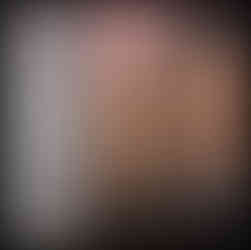






















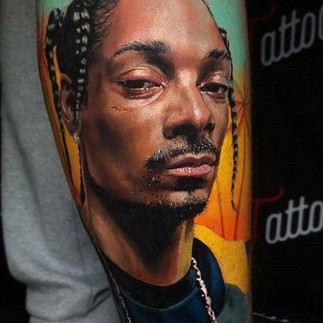



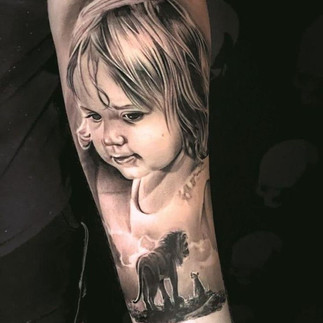






































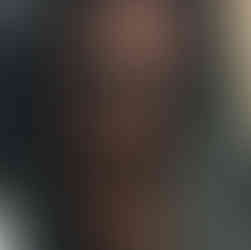






























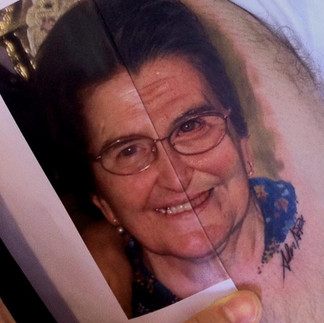













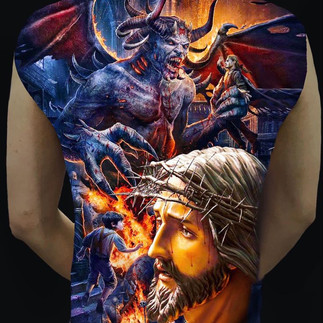

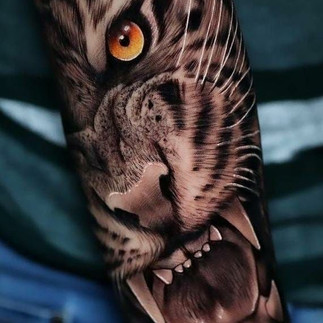

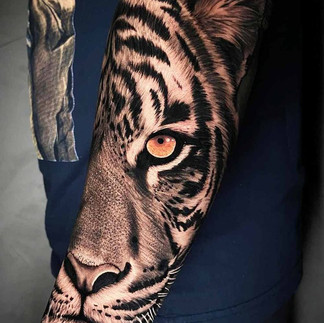















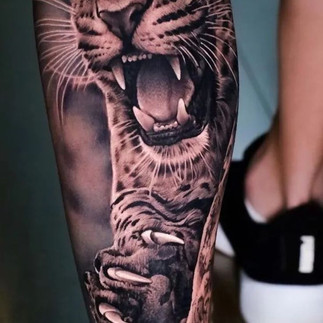













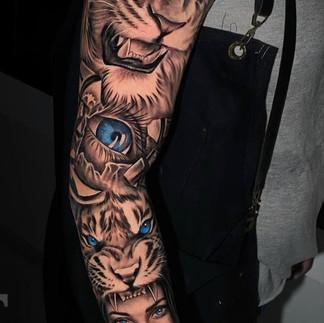




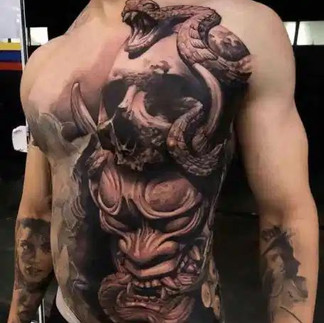









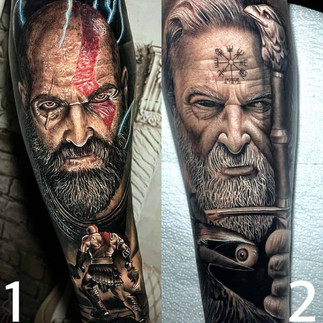

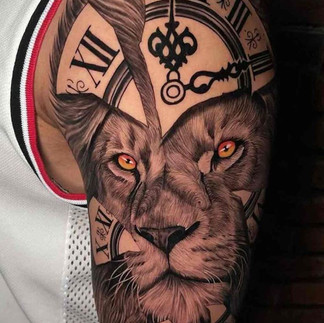





























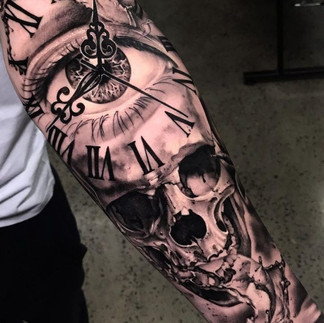





















Comments